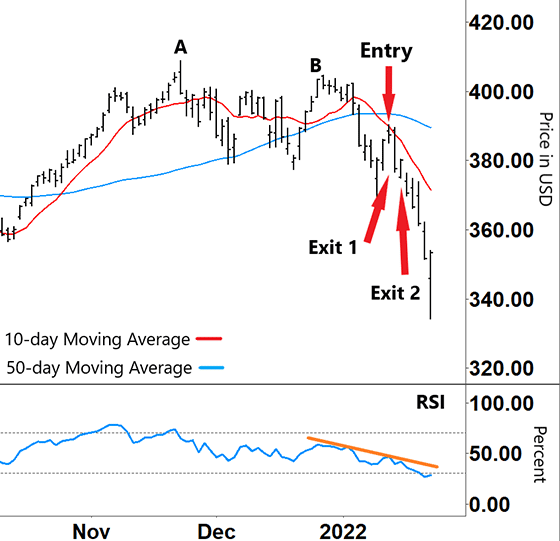|
Larry’s note: Welcome to Trading with Larry Benedict, the brand new free daily eletter, designed and written to help you make sense of today’s markets. I’m glad you can join us. My name is Larry Benedict. I’ve been trading the markets for over 30 years. I got my start in 1984, working in the Chicago Board Options Exchange. From there, I moved on to manage my own $800 million hedge fund, where I had 20 profitable years in a row. And, I’ve been featured in the book Market Wizards, alongside investors like Paul Tudor Jones. But these days, rather than just trading for billionaires, I spend a large part of my time helping regular investors make money from the markets. My goal with these essays is to give you insight on the most interesting areas of the market for traders right now. Let’s get right into it… |
When the markets are volatile and swinging all over the place – as they are now – the lure of outsized gains can easily influence traders to risk more than they should.
After all, it’s the possibility of big wins that usually attracts new traders into the markets in the first place.
However, swinging for big wins is a low-probability way to trade. And with so much money flying around the markets right now, a trade can quickly backfire.
Before you know it, a winning position can turn into an even bigger loss…
That’s why I continually emphasize the need to be nimble. I wrote back in December that being nimble would be the key to trading the markets successfully this year.
And so far, that’s exactly how it’s playing out.
Today, I want to show you what being nimble really means. For example, members of my trading service, The Opportunistic Trader, were able to book 12 profitable trades in a row in just the first couple of weeks of this year.
So, I’m going to run through one of those trades we did on the Invesco QQQ Trust Series 1 (QQQ) – an exchange-traded fund (ETF) based on the Nasdaq 100.
The goal was to capture an impending fall by buying a put option. (Remember, a put option increases in value when a share price falls.)
As you can see in the chart below, there were a number of factors that set up our trade…
Invesco QQQ Trust Series 1 (QQQ)

Source: eSignal
After peaking in November (A), QQQ failed to rally any higher in December. Its high in December (B) was lower than ‘A,’ which is a bearish signal.
This lower high at ‘B’ coincided with declining momentum (orange line) in the Relative Strength Index (RSI), which is also bearish.
And, with the 10-day moving average (MA – red line) crossing down over the 50-day MA (blue line) – our third bearish signal – I decided to enter our trade. You can see our entry point on the chart on January 12.
With QQQ trading down throughout the next day, we closed half our position (January 13) for a 26% gain (Exit 1).
Then, with disappointing bank earnings seeing the broader market open lower the following day (January 14), we closed out the remainder of our position for a 50% gain. That averaged out to a 38% gain in just two days.
As always, I want to be clear… we generated this return by using options (with options, the expiry clock is always ticking). That’s why we received a higher return than if we had shorted QQQ shares instead.
However, the point remains the same…
Our goal as traders is to go into the market and book profits as often as we can. Or simply, to put a ‘P’ (profit) on the page.
And the only way to do that is by being nimble… That’s what makes a successful trader.
Now, I know that the chart shows that QQQ kept falling after our exit. And if we held on a little longer, we could’ve banked an even bigger profit.
However, we can only say that now with the 100% benefit of hindsight. Had the market bounced instead, our nearly 40% gain could’ve evaporated just as quickly as we made it.
That’s why we put the ‘P’ on the page… It’s not about holding out for the biggest profits; it’s about taking the win and putting that money towards future trades.
Of course, we’re not always going to get it right. There are always going to be losing trades too.
However, with profits from our QQQ trade booked and the money in our account, we very quickly set ourselves up for our next profitable trade.
Regards,
Larry Benedict
Editor, Trading With Larry Benedict
What are some of your strategies for a successful trade?
P.S. We’re excited to hear what you think of your new eletter, Trading With Larry Benedict. Let us know at feedback@opportunistictrader.com.
Reading Trading With Larry Benedict will allow you to take a look into the mind of one of the market’s greatest traders. You’ll be able to recognize and take advantage of trends in the market in no time.
